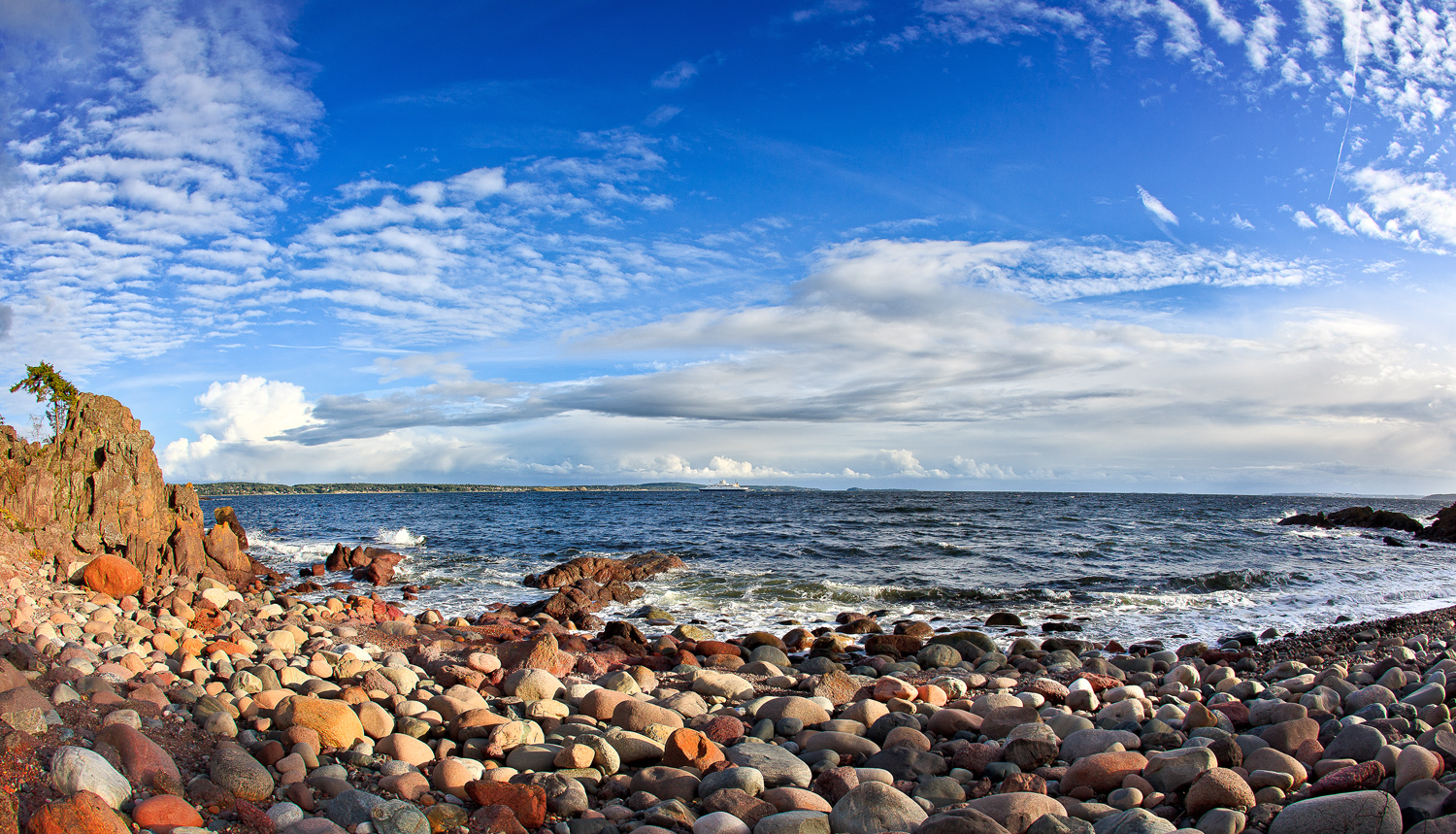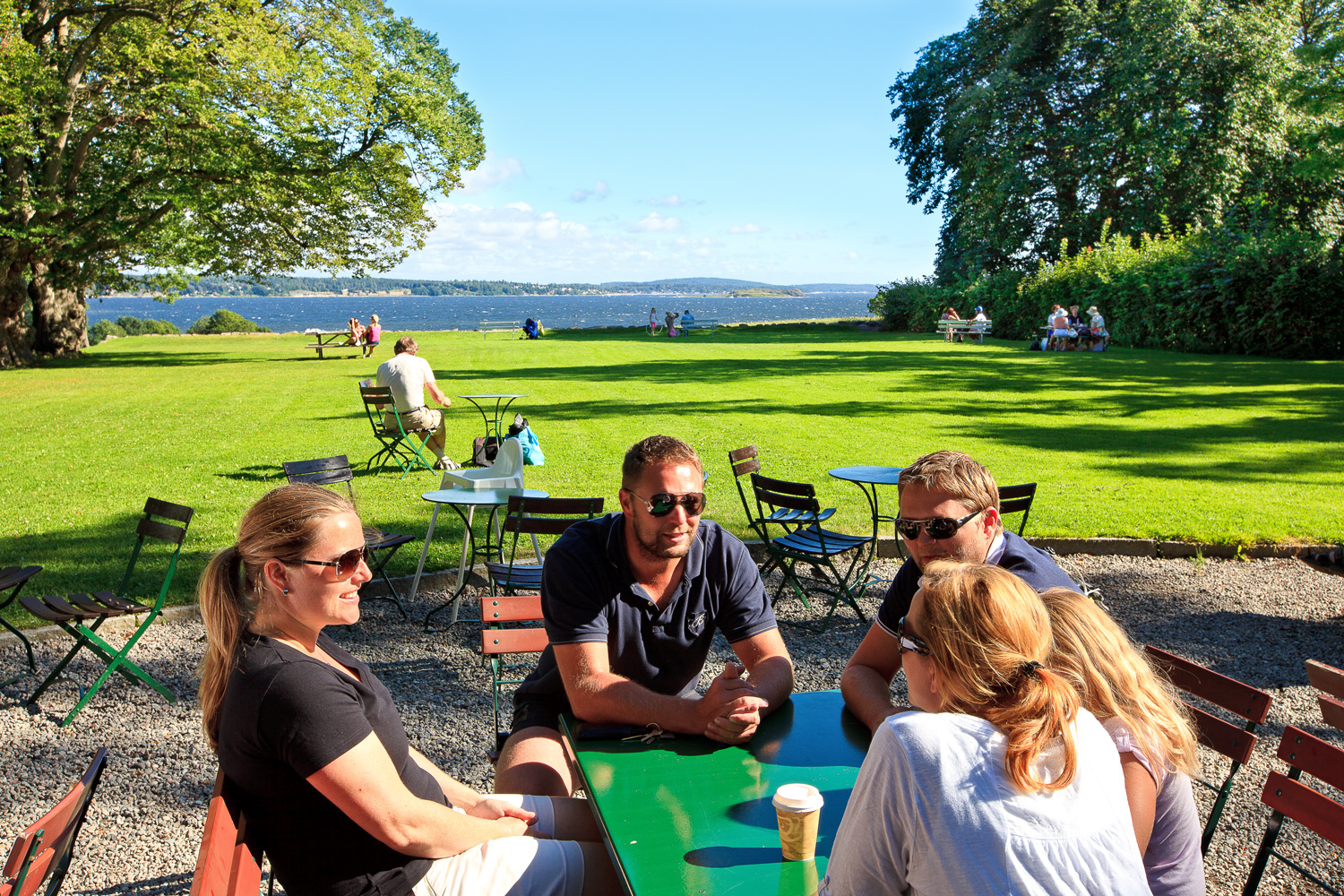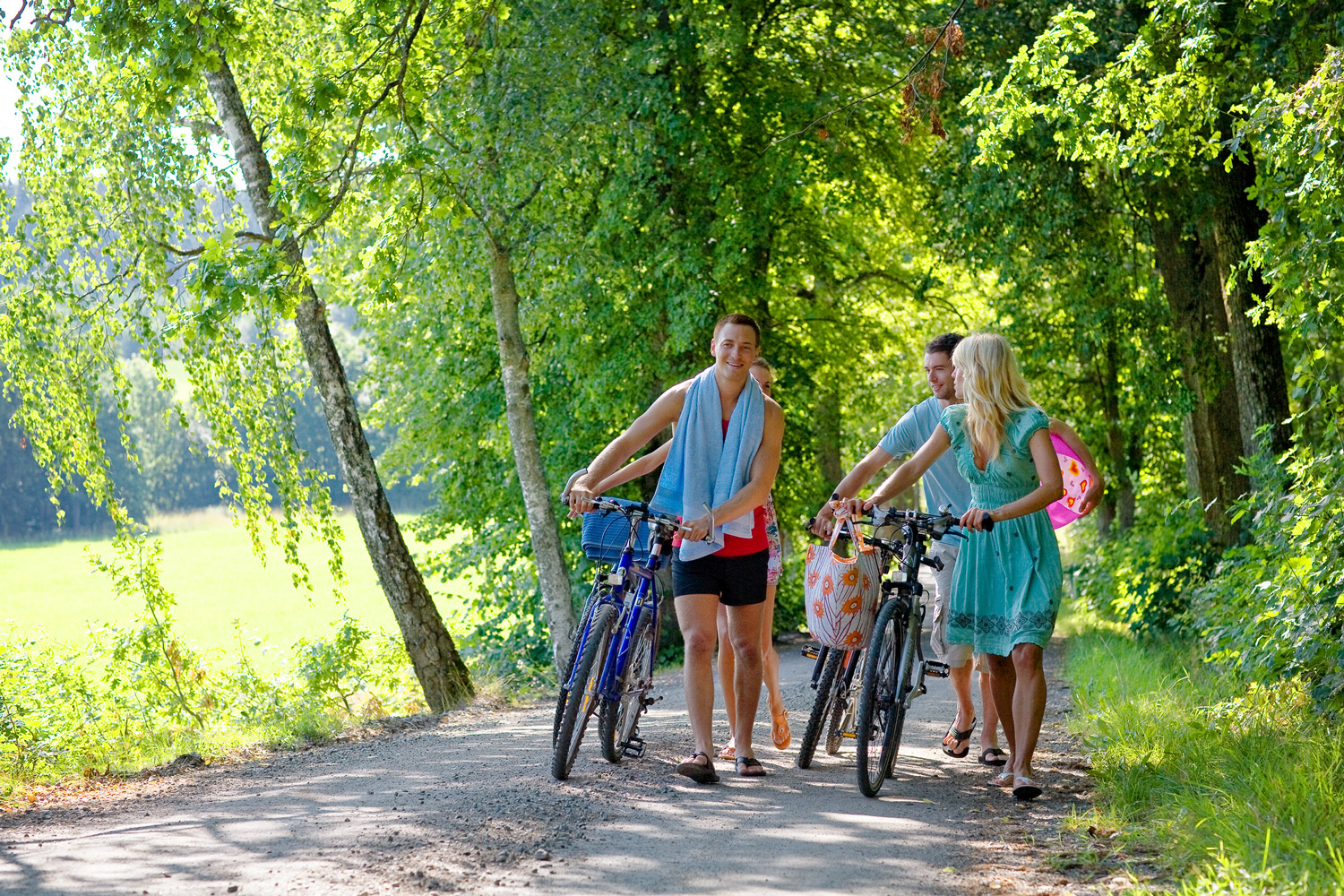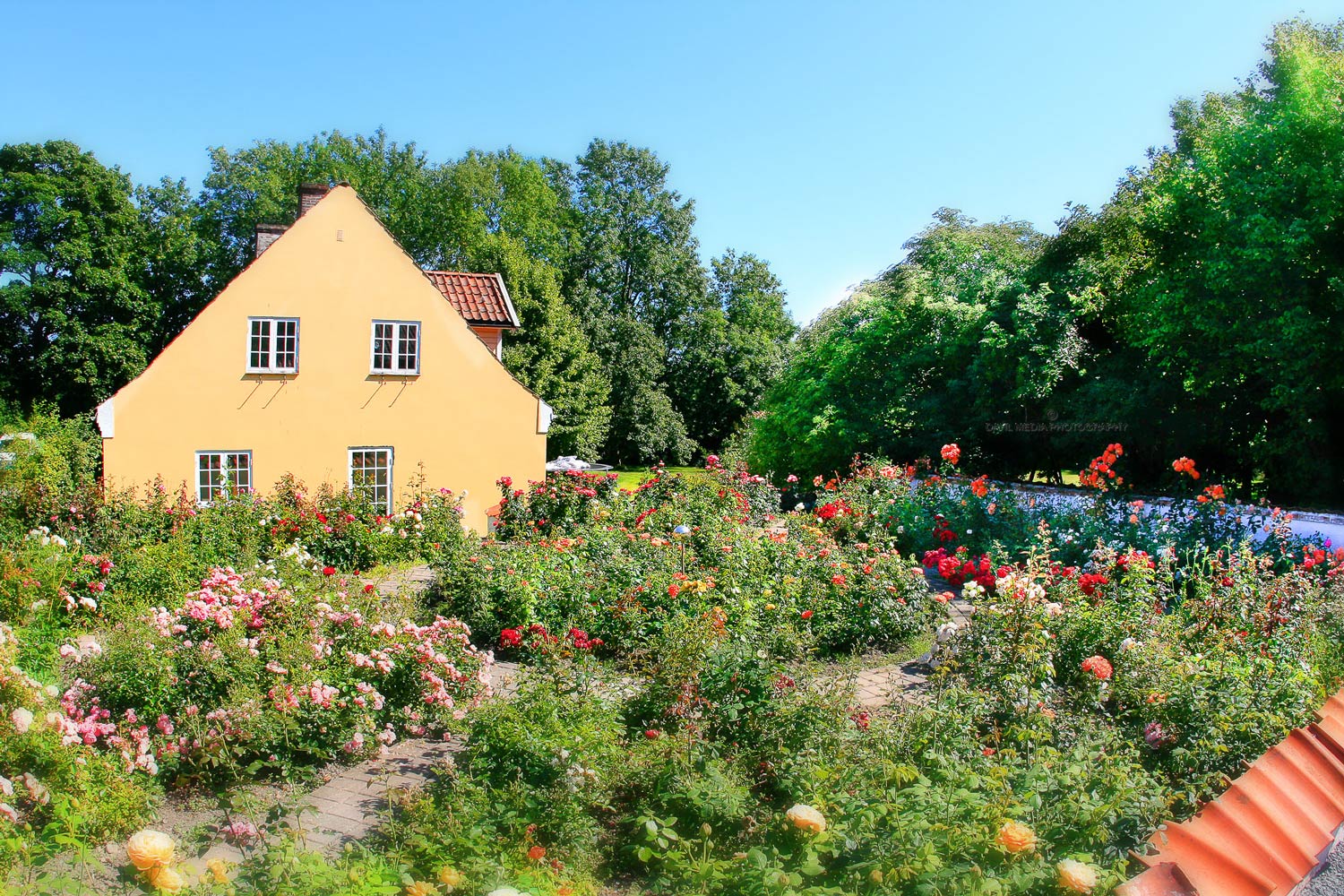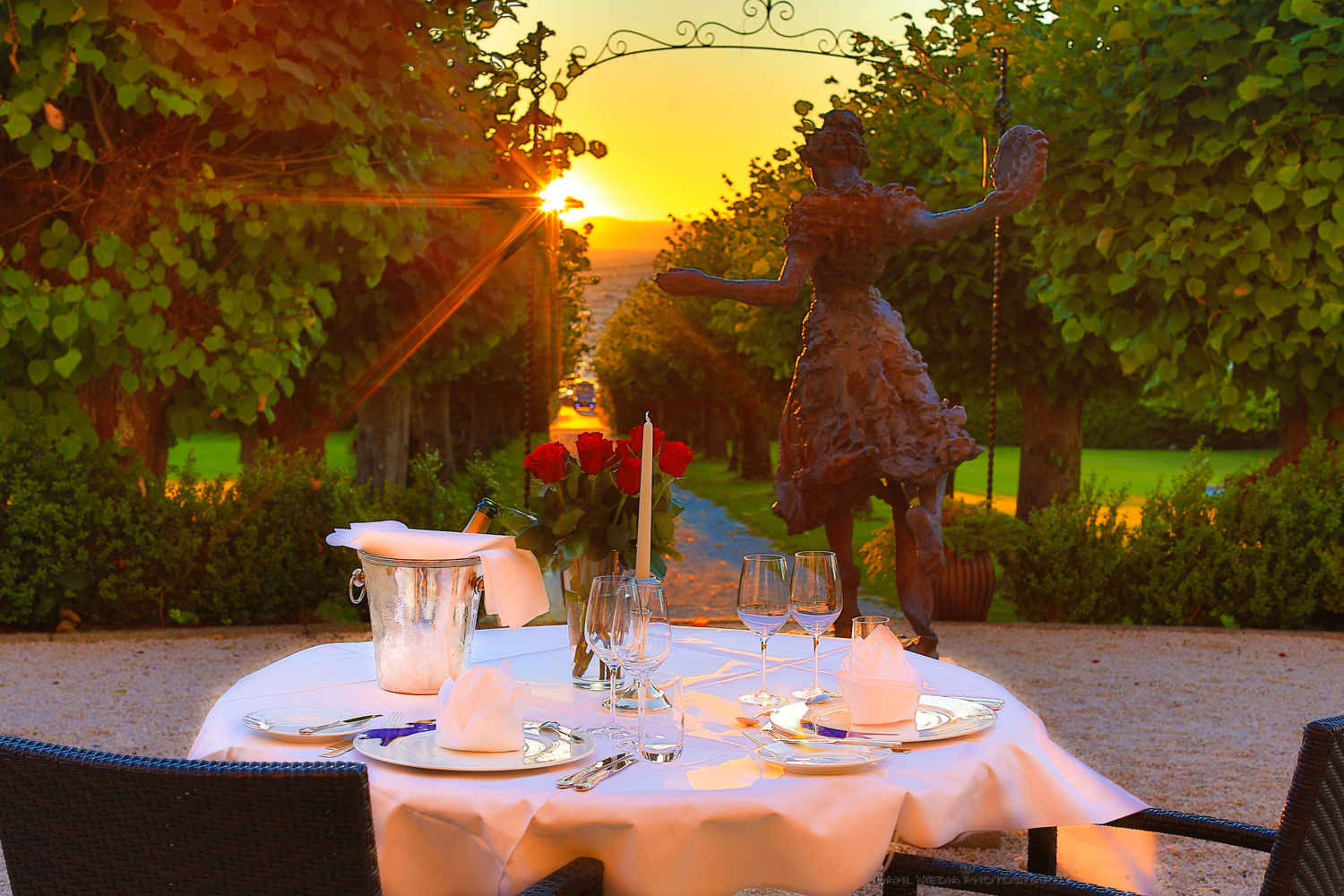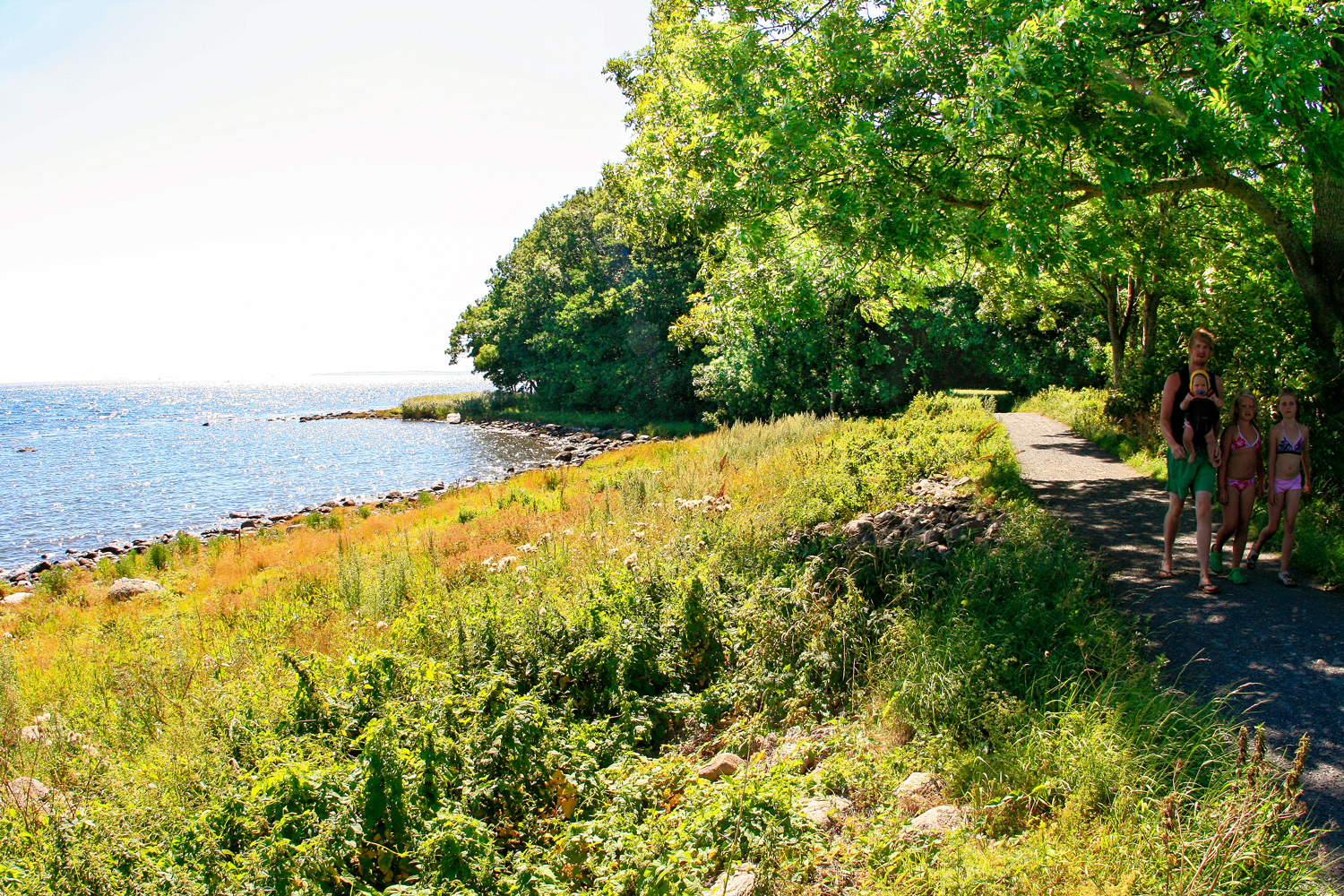JELØY
After only a 10 minutes’ walk from the street in Moss city, you’ll find yourself on Jeløy Island, which many call "Oslofjorden’s pearl." The island is known for its rich cultural and farm landscapes, but the island should really just as known for its geologic wonders. Did you know that there is a time gap of more than 500 million years between the ancient bedrock on Jeløy and the younger on mainland Moss?
Hotel Refsnes Gods – A hotel in a class of its own
Jeløy brings out all of the best emotions in you. The beautiful scenery of lush farmland and the blissful views of the Oslofjord are breathtaking. The vibrant culture history takes you back to yesteryear with stately homes and landscape which are characterized by alleys, stone walls and gardens. There are large green spaces in the form of forests, as well as countless excursions to choose from. There are a number of really great beaches on the island, both child-friendly sandy as well as pebble beaches. Some of the beaches are very crowded, while others are great beaches you can have all to yourself, even on sunny days.
AUTUMN SUN OVER JELØY IN MOSS. CHECK OUT THE LONG AVENUE LEADING TO ALBY FARM AND GALLERY F15.
When you arrive in Jeløya, it’s not difficult to understand why this is the artists' island. The lighthouse and its views of the scenic cultural landscape and the sea are unique and inspirational. The island's cozy art galleries and studios are well worth a visit. Here you’ll find, among other things, a glass house that specializes in handmade glass art, crafts, interior and design shops, pottery, photo artists, a silversmith, florists, photographers, shoemakers, a guitar maker, a wallpaper shop, and clothing designers.
Cycling is definitely the ideal way to travel when on Jeløya. There are many narrow roads and paths that crisscross the whole island.
See Jeløy from the Coastal Trail
On the way out to Jeløya, you’ll easily be able to take the coastal path that starts at the canal bridge in the center of Moss. Jeløya offers such diverse experiences and has one of the country's finest stretches of coastal path. We recommend that you take your bike to Jeløya, simply to reach several of the attractions of one of Oslofjord’s largest and most intriguing islands.
JELØYA HAS ONE OF THE COUNTRY’S RICHEST FLORAS, INCLUDING HEPATICA AND MISTLETOE. ON THE ISLAND, THERE ARE MORE LANDSCAPE AND NATURE RESERVES AS A RESULT OF THE UNIQUE NATURE. THE ISLAND HAS GREAT HIKING WITHIN ITS ALLEYS AND BUILD STI-SYSTEMS, INCLUDING THE COASTAL PATH.
The first part of the path on Jeløya is Southern Jeløy, an outstanding natural landscape. The path to the Southern Jeløy goes over the channel bridge - through Channel Park, past Sjøbadet, the town’s swimming beach in the heart of Moss. The trail goes along the roads and walkways. By Fiske Beach, we follow the trail along the streets to Vårli, while those who wish can walk along Fiske Beach and to the forest trail over the hill to Vårli. The coastal trail continues to Framnes where it runs into Southern Jeløy landscape, with meadows and mixed forests at Reiertangen.
A beautiful alley with stone walls leads up to Jeløy Radio.
The coastal path continues through a varied landscape between the manors with fields, stone walls, and a stunning archipelago nature and, at times, the path winds its way down to the water's edge. This lush and open landscape, the moraine that formed in Østfold for 10,000 years ago, created a completely different exuberance than in the rest of the country. The good earth is easily accessible and central location of the Oslo fjord trading route was probably the main reason why so many mansions were built in the region. The area of Jeløy and south was once a Manor County more than anything else. 25 percent of all the mansions in the country lay in this county, which at that time included Båhuslen. Beyond here the road went to the rest of continent. People spoke French and had great cultural exchange with foreign countries. Manors were great gathering places for political meetings and when Christiania Bohemians would have a festive party with the "beautiful people" and the high society. When you see the great manor houses today with the lush gardens, you’ll see how lively they were and how people danced and conversed.
Gallery F15
Gallery F 15 is one of the oldest and most traditional institutions for contemporary art in Norway.
A long and wonderful impressive alley with stone walls on both sides leads up to Alby Gård (Alby farm) that also houses the Gallery F 15. Gallery F 15 is one of the oldest and most traditional institutions for contemporary art in Norway. The institution was established in 1966 as the first gallery of its kind, and the name comes from the address Fossen 15 in Moss, the gallery's first location. There is also a cafe attached to the gallery. There you can buy the famous Alby cringle. Outside Gallery F 15 is a large garden / park where you can enjoy the amazing view over the fjord. The park is actually nice and cool on hot summer days. The gardens in front of the main building at Alby are quite unique among the traditional gardens. The conscious shaping of the terrain and the retaining wall in the south of the garden makes it so that the ground beneath becomes erased from view. At first glance, you might think the fjord reaches all the way up to the farm. This intentional illusion is a well-known tool in the traditional English garden art and of French baroque gardens. In the same retaining wall, a cave was used as a gazebo. In the old storehouse at Alby Gård is also the Nature House, the country's first nature center. The center was founded in 1985 and tells of Jeløy’s natural conditions.
A long and wonderful impressive alley with stone walls on both sides leads up to Alby farm that also houses the Gallery F 15.
Next door to Alby Gård, Røed Gård (Røed Farm) is not only of great interest in terms of architecture and styles. The couple Ruth and Knut Mamen has painstakingly restored the nearly 300 year old main building and developed the property into a diverse cultural workshop for various artisans and visual artists. Behind the main house is a landscaped park with a trout pond. It has both a bridge and a romantic gazebo. In the spring, the park is a beautiful sight with cherry blossoms and sheep grazing. Around the estate, you’ll find activities like a gallery, farm shop and a courtyard café. The farm is a major cultural center with art exhibitions, concerts and lectures. Summer concerts in the lush garden are described as magical. Many famous artists perform here every summer.
THE STUNNING ROSE GARDEN ON RØED GÅRD
Traces of antiquity
From Alby, the coastal path to Albybukt Bay is in close contact with the sea until it reaches Bredebukt Bay. All of the latter stretch is surrounded by forest, and this stretch includes three good beaches along the trail. From Bredebukt, the path changes character to a more challenging and rugged, twisting, narrow path. At the same time, the scenery around you changes dramatically to more rugged terrain with rough and rugged rocks and mountains. In addition, there are a lot of mixed forests interspersed with some spooky thickets. The nature just becomes wilder and it's wonderful to find such a change from the more romantic start of the coastal path on Jeløy.
This more challenging route runs from Bredebukt via Stalsberget on the footpath on exciting rugged terrain. After you have hiked down the path to Stalsberget, it opens up a great pebble beach for you. The entire pebble beach is surrounded by steep landscape. Especially in this area at and around Stalsberget, you can find traces of the half billion year old bedrock.
The bedrock on Jeloy is of volcanic origin.
Jeløya, which is part of Moss Municipality, is approximately 20 square kilometers. 10 kilometers long and 4 kilometers at its widest. Geologically, the island is a sunken area in relation to the mountain on the mainland to the east.
The bedrock on Jeloy is of volcanic origin. Jeløy bedrock is from the Permian Period. There is a time gap of more than 500 million years between the ancient bedrock on Jeløya and the younger on the mainland in Moss. The large moraine covers the southern part of Jeløya and the isthmus canal.
When the ice retreated about 10,000 years ago, the land began to rise. This elevation is still ongoing. Both Rødsåsen and Reieråsen have sloping east side and steep slopes on the west side. This is a result of the ice and sea work. Along Stalsberget waves have created bowl-shaped depressions in the rock, known as jettegryter" or “potholes.”
Gullholmsundet
Rich fauna
Forests dominated by herbaceous, coniferous forest, but there are also several stands of deciduous forest. Albyskog (the Alby forest) is behind many of the old beach fortifications damp depressions with alder woods. Otherwise, the area has buffer zones and sandy, pebble, and rocky beaches; each with its own distinctive vegetation communities. The great diversity of habitats and vegetation provide the corresponding variation in wildlife. In particular, insect fauna and many rare species are found here. Among butterfly enthusiasts, Jeløya is well known. Mammal species in this area are mostly come from other places: hedgehogs, foxes, badgers and deer. Bird life is prolific with a total of 185 identified species. Jeløya is conveniently located for bird migration in Outer Oslofjord. A long and continuous shoreline is an attractive feeding ground for migratory birds.
The island is known for its rich cultural and farm landscapes, but the island should really just as known for its geologic wonders.
Hotel Refsnes Gods
A short distance north of Stalsberget, the coastal trail follows along the lake until Tronvik. This distance is no longer challenging after you’ve gone on a wide dirt road. At the water's edge on Tronvik stands the lofty and special building, The Tronvik Torpedo Station. Tronvik Torpedo Station was established in 1916 and closed in 1980. The defense used the torpedo station for testing torpedoes. From Tronvik, there is a route to Lonin along the waterfront until Svaleveien where Hotel Refsnes Gods is. Refsnes Gods is known for its excellent cuisine and a well-stocked wine cellar - not to mention the unique art collection.
Discover the unknown part of Jeløya
Tronvik Torpedo Station
By Tronvik, the path ends, but that does not mean the fantastic hiking ends with the coastal path, quite on the contrary. Until now, the article has been describing just the southern part of Jeløya. Most of Jeløy landscape remains to be explored. Indeed, when the southern part of Jeloy is out of the way, there is still two-thirds of this beautiful and fertile island. Most of Jeløy northern areas consisting of more rugged terrain than in the south, and there is little settlement, but an incredibly great landscape. Lots of forest, but also open lots of meadows and fields.
The shore is undeveloped around most of the island, making it possible to freely walk around much of the island, where there are not too many hills. There are a number of easily accessible beaches all over the island, so there is almost always a beach that is sheltered from today's weather. Jeløya has one of the richest floras, including black eyes and mistletoe. On the island are several conservation areas and nature reserves as a result of the unprecedented nature.
Vestre Nes is a popular recreational area located northwest of the island. Vestre Nes Recreation Area is approximately 300 acres and was acquired for recreation area in 1974. The area is forested and has cliff, pebble, and sandy beaches. You’ll notice it by open the pine forest on shallow and dry ground. A very popular campground is located at the bathing bay Nesbukta, north of Nes.
From the top of Bjørnåsen, there are fantastic views of Oslofjord and the middle parts of Jeløy.
North of Nes, the landscape becomes quite powerful, and from Nes, you can see up to Jeløy’s highest peak, Bjørnåsen. The walk up to Bjørnåsen is highly recommended. You can get up to Bjørnåsen by following the road along the campground to Nesveien and follow this a little further north to a turn. Here you’ll find an excellent path into the woods, which comes with steep terrain through the forest including spruce, pine, linden, hazel and birch. From the top, there are fantastic views of Oslofjord and the northern and middle parts of Jeløy. Have a good trip!
NEWS!
New hotel with outdoor and wilderness experienses 10 minutes from Moss / Jeløy and 40 minutes from Oslo
